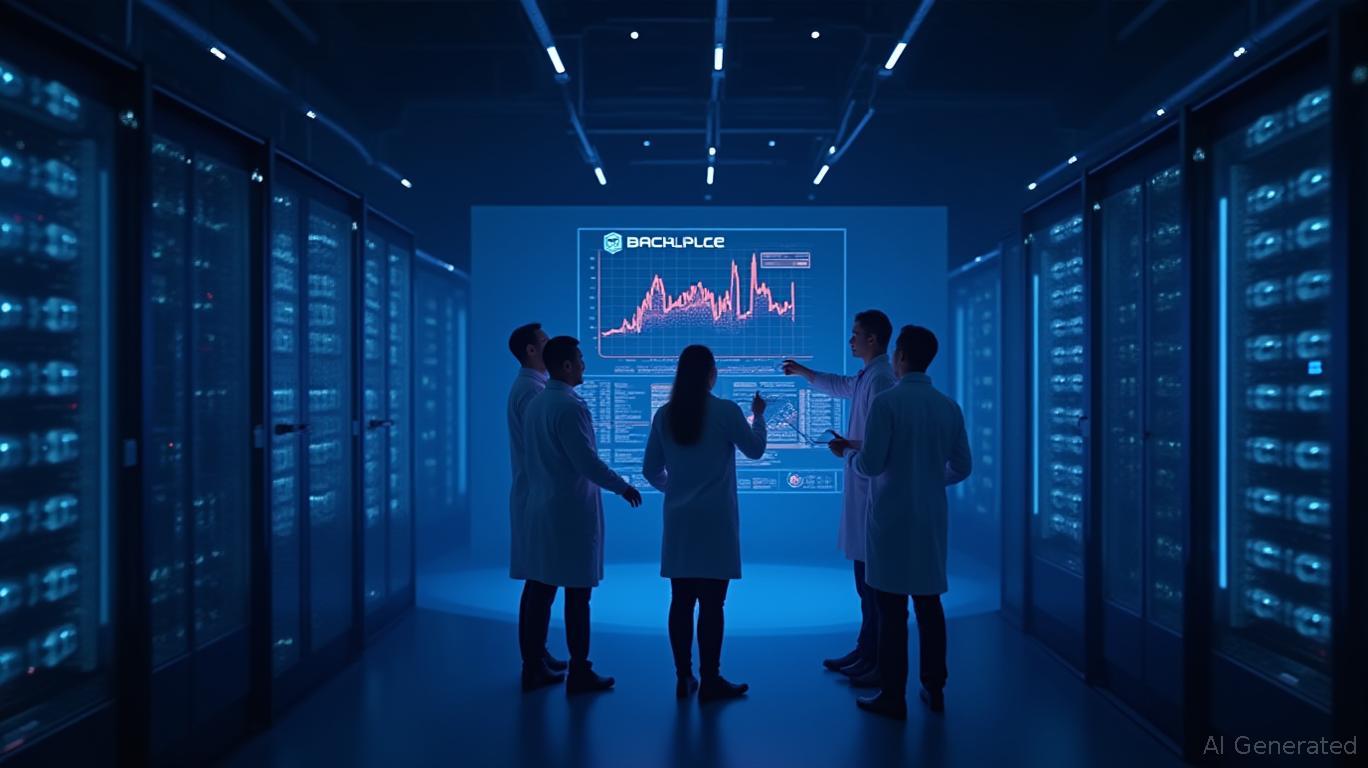Backblaze's Tightrope Act: Balancing Growth with Liquidity and Efficiency
Backblaze (NASDAQ: BLZE) has long been a poster child for the “storage-as-a-service” model, but its recent financial performance suggests the company is now walking a high-wire act: scaling rapidly while tightly managing costs and preserving liquidity. In Q1 2025, Backblaze reported 15% year-over-year revenue growth, driven by its B2 Cloud Storage division, which surged 23% to $18.0 million. But the real story lies beneath the top line: a deliberate strategy to optimize cash flow, reduce losses, and position itself for long-term profitability in a crowded tech landscape.

Liquidity: A Cushion for Growth
Backblaze's cash and marketable securities stood at $53.2 million as of March 31, 2025—a solid buffer for a company still operating at a net loss. While its adjusted free cash flow turned negative ($2.1 million in Q1), this represents a significant improvement over the $5.1 million negative figure from Q1 2024. The narrowing net loss (down to $9.3 million from $11.1 million) and a 18% adjusted EBITDA margin (up from 6% in Q1 2024) underscore progress in converting revenue into sustainable cash generation.
The company's recent multi-million-dollar contract win—a multi-year deal with an enterprise client—adds further confidence. Such large deals not only boost revenue but also improve predictability, a critical factor for investors. Meanwhile, its decision to address a “short-and-distort” attack head-on, with an independent review and detailed transparency, has likely stabilized investor sentiment.
Cost Efficiency: The Margin Makeover
Backblaze's shift toward higher-margin services is evident. The adjusted gross profit margin rose to 79% of revenue, up from 77% a year ago, as the company scaled its cloud storage business. B2 Cloud Storage's 23% revenue growth outpaced its computer backup division (8% growth), a sign that the company is successfully pivoting toward higher-value offerings.
The B2 division's Net Revenue Retention Rate (NRR) dipped slightly to 117% from 126%, but this is likely a temporary blip. More telling is the 24% YoY growth in B2's ARR, which now accounts for 52% of total ARR. The focus on AI-driven solutions, like the B2 Cloud Storage Overdrive for high-throughput workloads, suggests this division has room to expand further.
Backblaze also appears to be streamlining operations. Its non-GAAP net loss shrank to $1.8 million from $5.5 million in Q1 2024, excluding stock-based compensation. This metric matters because it reflects operational decisions rather than equity incentives—a key point for investors evaluating cash burn.
Strategic Bets: Riding AI and Partnerships
Backblaze's move into AI infrastructure is a masterstroke. Partnering with GPU provider PureNodal and media tech firms like iconik positions it to capture demand from AI developers and content creators. The NAB Product of the Year Award for its Scalable Application Keys highlights its product-market fit in niche verticals.
However, this strategy carries risks. Competitors like Amazon Web Services and Google Cloud are aggressively expanding their AI offerings, and Backblaze's smaller scale could be a disadvantage. Still, its focus on cost efficiency—B2's pricing remains competitive—could offset this.
The Elephant in the Room: Cash Flow and Valuation
Despite progress, Backblaze's adjusted free cash flow remains negative. To achieve positive cash flow, it must either accelerate revenue growth further or rein in expenses. The company's 2025 revenue guidance of $144–146 million implies 15–17% YoY growth, which is ambitious but achievable if B2's margin expansion continues.
Investors should also scrutinize valuation. Backblaze's market cap of ~$600 million (as of June 2025) reflects skepticism about its path to profitability. If the stock is trading at roughly 4x revenue, it's a bet on future margin improvements—not just growth.
Investment Takeaway: A High-Reward, High-Risk Play
Backblaze's story is compelling but fraught with execution risks. On the plus side:
- Its B2 division is a growth engine with scalable economics.
- Liquidity is sufficient for the next 12–18 months, buying time to turn cash flow positive.
- Strategic partnerships and AI focus open new revenue streams.
On the downside:
- Negative free cash flow persists, and the path to positive net income remains unclear.
- The stock's valuation assumes perfection—any stumble could lead to a selloff.
- The “short-and-distort” episode shows that investor confidence is fragile.
Historical data further underscores the risks. A backtest of this strategy reveals stark challenges: it delivered a -31.03% annualized return with a maximum drawdown of -77.87%, reflecting extreme volatility and poor risk-adjusted performance. This aligns with Backblaze's stock's sensitivity to earnings surprises and macro headwinds.
For aggressive investors, Backblaze offers asymmetric upside if it can sustain B2's growth and achieve positive cash flow by late 2025. However, the risks—competition, execution, and macroeconomic headwinds—are substantial. A cautious approach might involve a small position with a tight stop-loss, while bulls could average into dips.
In the end, Backblaze's success hinges on its ability to walk the tightrope between growth and financial discipline. If it lands gracefully, this could be a breakout story in cloud storage. One misstep, though, and it's back to square one.
Data as of June 2025. Past performance does not guarantee future results. Consult your financial advisor before making investment decisions.

Comments
No comments yet